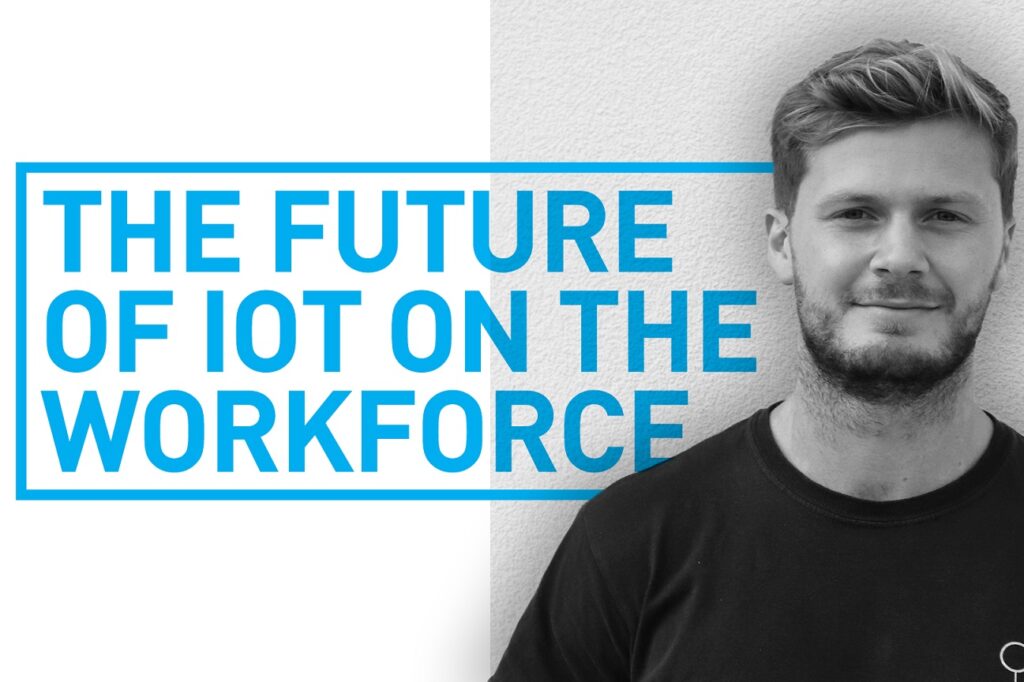
According to a recent Microsoft report, by the end of 2021 94% of businesses will use the Internet of Things. Whether this be through artificial intelligence, deep learning or machine learning – you may find yourself looking around your office now – chances are you may already be using it without realising it, and be reaping the benefits more than you think.
In a survey conducted by Harvard Business Review, 58% of respondents said that the use of IoT increased the collaboration between employees and 54% believed that it improved employee productivity. IoT is aiding our workforces to be more collaborative, productive and interconnected, and there is no sign of that slowing.
The growth of the IoT workforce
Of course, with the rapid proliferation of IoT use, it’s natural that this sub-sector of technology will be susceptible to growth too. This is something we see first-hand as specialists in hiring for the IoT market. Roles such as data scientists, DevOps managers, software engineers and developers are ones we have seen a sharp increase in. This is natural, as technology develops quickly, roles must develop at the same rate to sustain this growth.
As these roles emerge, skills shortages are becoming more apparent, so businesses are investing heavily in salary increases, internal and external training and are working hard on their employer brands to attract the top talent. Take DevOps for example; the role of a manager is expected to experience between five and eight percent growth between 2014 and 2024. Business leaders can acknowledge that to accommodate this, consistent reskilling and development opportunities are integral to incentivise this key cross section of the market.
Going hand in hand with this is the proliferation of work experience alongside a strong attempt to attract more women to the workforce, in order to diversify. In a recent study, 51% of women in tech said that someone has insinuated that being a woman will stall their career. Engaging young children into STEM careers is a strong focus, given the fact the market is growing so quickly. Future proofing the workforce to accommodate these developments will be a strong focus for SMEs, multinationals and even governments going forward.
IoT will improve workplace environments
It’s not only the IoT workforce that will experience growth thanks to the increased implementation of these tools into the workplace – enhanced productivity is also a key outcome. In fact, we will begin to see IoT used to incentivise all members of the workforce to come and work for you.
It can, for example, be implemented effectively to improve the atmosphere of the workplace, which is particularly useful for office-based jobs. Smart temperature controls and smart lighting can analyse data and current conditions to ensure the comfort level of workers are optimised. Also, you never need to worry about forgetting to lock up again with automated locking controls sensing when the last person leaves for the day.
IoT can also be applied to improve the work-life balance of individuals. With the use of effective and speedy systems, remote working is readily available. This tends to be due to the advances in communication software. Remote working allows people to save time and money on travelling into the office and will also allow members of the workforce who are perhaps parents or carers to balance their workday. It’s likely that IoT will help us move towards a more diverse and effective workforce.
IoT may eradicate jobs, but it will create them too
There has been great scrutiny on the labour market and the notion that AI and IoT will ‘steal jobs’ away from human workers. This is true to an extent, but not in the damaging respect of the theory. The use of IoT in the industrial and automotive sectors, for example, will reduce the need for ‘manual workers’ – this will be due to the application of sensors and pre-programmed robots that can take over the more menial tasks. This may result in a short-term lack of need for manual factory workers and service engineers but will create more work for programmers and data analysts who will be needed for the practical implementation of these new processes.
The IoT market is innovating fast, and with its market value predicted to double by 2021 to reach $520 billion, it’s clear that heavy investment into the skilled workforce will be necessary to sustain this growth. Additionally, the practical and productive benefits of IoT systems will be introduced into the common workplace, aiding workers to achieve their goals and tackle their tasks efficiently.

Hugh Jones, IoT Talent Consultant, Paratus People


